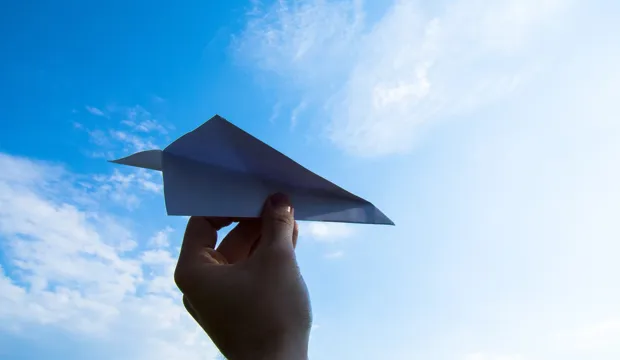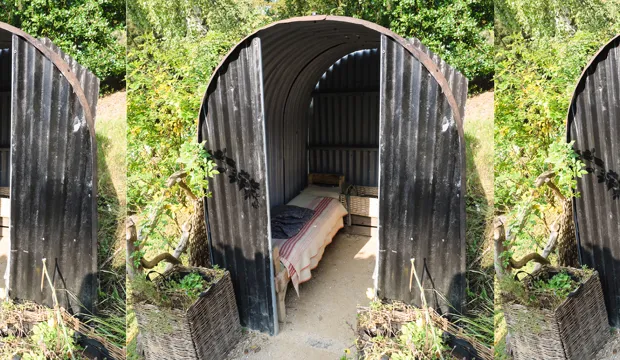
Make a radio receiver
Make an electronic circuit that can both receive and play FM radio signals
In this activity learners will make use of the theme of World War 2 to learn about how FM radio was used by the Allied forces during the war. They will them assemble a circuit that acts as an FM radio receiver. Finally, they will test their circuit to see how well it works.
This activity could be used as a main lesson activity to teach about how radio and radio systems work, and how to assemble a radio receiver circuit. It could also be used as part of wider scheme of learning focussed on electronic systems and circuits, or as part of a wider theme-based project on World War 2.
Activity: Making an electronic circuit that can both receive and play FM radio signals
This is one of a series of resources that are designed to allow learners to use the theme of the second world war to develop their knowledge and understanding in Design & Technology and Engineering. This resource focusses on learners assembling an FM radio receiver circuit. This is a challenging activity that involves assembling a bought-in kit of parts using soldering irons. It is aimed at Year 6 pupils with good ability in Design & Technology.
Tools/supplies needed:
Resources required:
- Solder
- FM radio kit including PCB and all required components (e.g. https://kitronik.co.uk/products/2157-fm-radio-kit-v20)
- Soldering irons
- Soldering iron stand and damp sponge
- Desk protector board
- Safety glasses
- Wire cutters
- Wire strippers
Follow our step-by-step guide to make a radio receiver
Step 1 – Mounting resistors
Using the colour code, place each resistor into the right part of the circuit board:
R1 – brown, black, yellow
R2 & R9 – red, red, yellow
R3 – green, blue, orange
R5 & R11 – black
R6 – blue, grey, red
R8 – orange, orange, red
R10 – brown, black, brown
R12 – yellow, purple, brown
R13 – brown, black, orange
Step 2 – Soldering resistors
- On the track side, solder the metal legs to the metal pads on the board
- Be careful not to use too much solder
- Use wire cutters to snip the ends off the legs when done
Step 3 – Mounting ceramic capacitors
Place each ceramic capacitor into the right part of the circuit board:
C1, C2 & C14 – labelled 104
C3 & C4 - labelled 22
C5 & C6 – labelled 474
C7 – labelled 471
C8 – labelled 102
C9 – labelled 33
Step 4 – Soldering ceramic capacitors
- On the track side, solder the metal legs to the metal pads on the board
- Be careful not to use too much solder
- Use wire cutters to snip the ends off the legs when done
Step 5 – Mounting polarised capacitors
Place each polarised capacitor into the right part of the circuit board:
C10 – labelled 100 μF
C11, C12, C13, C15 & C16 – labelled 1 μF
Make sure you put the short legs in the holes labelled - , and the long legs in the holes labelled +.
Step 6 – Soldering polarised capacitors
- On the track side, solder the metal legs to the metal pads on the board
- Be careful not to use too much solder
- Use wire cutters to snip the ends off the legs when done
Step 7 – Mounting the timing crystal
- Place the silver timing crystal into the part of the circuit board labelled XTAL1.
Step 8 – Soldering the timing crystal
- On the track side, solder the metal legs to the metal pads on the board
- Be careful not to use too much solder
- Use wire cutters to snip the ends off the legs when done
Step 9 - Mounting the potentiometers
Place the ‘volume’ and ‘tune’ potentiometers into the right parts of the circuit board:
- R7 = Volume – labelled 10 k
- R4 = Tune – labelled 100 k
Step 10 – Soldering the potentiometers
- On the track side, solder the metal legs to the metal pads on the board
- Be careful not to use too much solder
Step 11 – Adding the antenna
- Cut a 600 mm long piece of wire
- Strip the insulation off one end with wire strippers
- Place this end into the hole on the PCB marked ‘antenna’
- Solder on the other side of the board
- Use wire cutters to snip the ends off the legs when done
Step 12 – Adding the battery pack
- Place both wires through the strain hole
- Mount the red wire where it says ‘red’ on the PCB
- Mount the black wire where it says ‘black’ on the PCB
- Solder on the other side of the board
- Use wire cutters to snip the ends off the legs when done
Step 13 – Adding the speakers
- Cut and strip two wires for the speaker
- Mount and solder one end of each wire to the speaker
- Mount and solder the other end of each wire to the part of the PCB marked ‘speaker’
- Use wire cutters to snip the ends off the legs when done
Step 14 – Testing
- Put 3 AA batteries into the battery pack
- Use the volume and tuning knobs to hear different radio stations playing
- If the signal is poor, move the antenna around or try going outside
Extension
- Design a casing for the radio circuit
- Make a model of your casing in card
- Design a carry case for the radio
The Engineering Context
Engineers need to be able to understand how electronic circuits are made and how they work, for example how to construct and investigate the function of a radio circuit.
Engineers need to understand the historical context of different technological inventions, such as radio, and how they were used. This helps them to learn from mistakes made and produce improved products and systems.
Suggested learning outcomes
This resource combines Design and Technology and Engineering, with the aim that the learners will be able to understand how FM radio was used during the second world war, to be able to make and test an FM radio receiver circuit and to be able to use circuit assembly and soldering equipment safely.
Download our activity sheet and other teaching resources
All activity sheets and supporting resources are free to download, and all the documents are fully editable, so you can tailor them to your students’ and your schools’ needs.
The activity sheet includes teachers’ notes, useful web links, and links (where appropriate) to the national curriculum in each of the four devolved nations; England, Northern Ireland, Scotland and Wales.
You can download our step-by-step instructions below as a classroom lesson plan and PowerPoint presentation.
Please do share your highlights with us @IETeducation.




